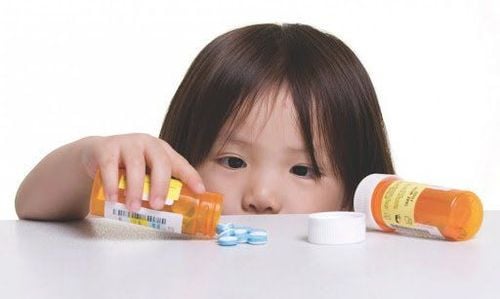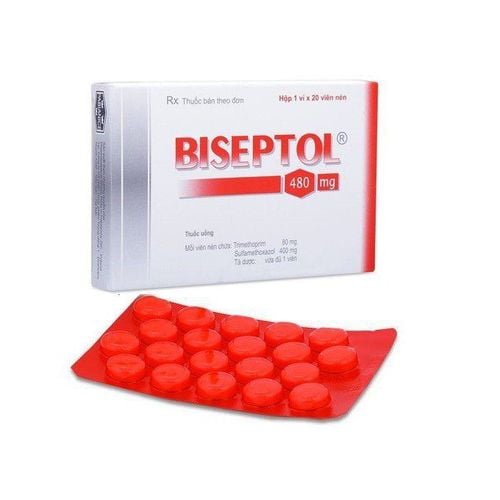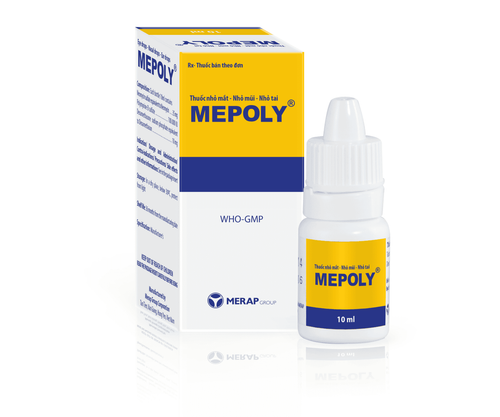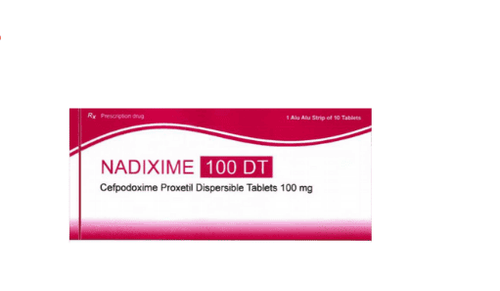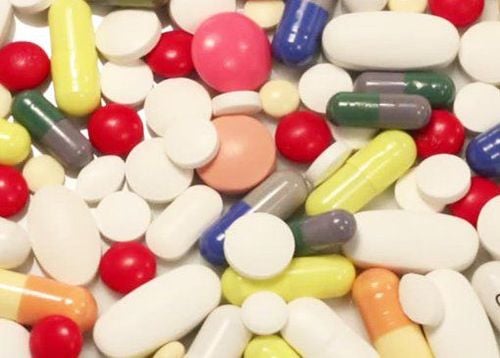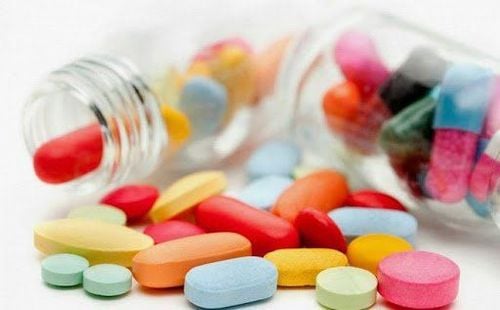This is an automatically translated article.
Cefdinir medicine 125mg/5ml contains the active ingredient Cefdinir - an antibiotic belonging to the Cephalosporin group. The drug is indicated in the treatment of mild to moderate infections caused by susceptible bacteria such as community-acquired pneumonia, exacerbation of chronic bronchitis, acute sinusitis,... Let's find out. about the uses and notes when using Cefdinir through the article below.1. Uses of Cefdinir 125
1.1. Point
Cefdinir medicine 125 mg / 5ml contains the active ingredient Cefdinir - an antibiotic belonging to the cephalosporin group. It is indicated in the treatment of mild to moderate infections caused by susceptible organisms. Specifically as follows:Community-acquired pneumonia caused by pathogens such as Moraxella catarrhalis, Haemophilus influenzae, streptococcus pneumoniae; Acute exacerbation of chronic bronchitis caused by the agents Moraxella catarrhalis, Haemophilus influenzae, streptococcus pneumoniae; Acute sinusitis caused by Moraxella catarrhalis, Haemophilus influenzae and streptococcus pneumoniae; Pharyngitis/tonsillitis caused by streptococcus pyogenes; Skin and skin structure infections caused by Staphylococcus aureus, Streptococcus pyogenes; Acute otitis media caused by Moraxella catarrhalis, Haemophilus influenzae, Streptococcus pneumoniae.
1.2. Pharmacodynamic
Active ingredient Cefdinir is an antibiotic active against a wide range of gram-negative and gram-positive bacteria. The antibacterial spectrum of the drug includes:Gram-positive bacteria: Staphylococcus epidermidis, Staphylococcus aureus, Streptococcus pyogenes, Streptococcus pneumoniae; Gram-negative bacteria: Moraxella catarrhalis, Haemophilus influenzae, Escherichia coli, Proteus mirabilis, Klebsiella pneumoniae, Neisseria gonorrhoeae. Cefdinir belongs to the 3rd generation Cephalosporin antibiotic group. The antibacterial effect of the drug follows the mechanism of inhibiting the synthesis of the bacterial cell wall, thereby preventing the bacteria from creating a cell wall and breaking down under the action of Cefdinir. use of osmotic pressure.
1.3 Pharmacokinetics
Absorption: Maximum plasma concentrations of Cefdinir are reached 2 to 4 hours after oral administration. Concentrations increase with dose, but less so at doses between 300 mg and 600 mg. The predicted bioavailability of the drug is about 21% after a dose of 300 mg.Distribution: The volume of distribution (Vd) of Cefdinir in adults is about 0.35 L/kg and about 0.67 L/kg in children 6 months to 12 years of age. Approximately 60% - 70% of the drug content is bound to plasma proteins, the binding is independent of drug concentration.
Metabolism and Elimination: The drug is not significantly metabolized and is eliminated mainly by the kidneys. The mean half-life of Cefdinir is approximately 1.7 hours. Adults with normal renal function have a renal clearance of 2.0 mL/min/kg following oral administration of a 300 mg dose with a clearance of 11.6 mL/min/kg. The rate of Cefdinir reabsorbed unchanged in the urine after oral administration was 18.4% at a dose of 300 mg. Clearance of the drug is reduced in patients with renal impairment.
2. Dosage of Cefdinir 125
Cefdinir 125mg/5ml is taken orally, should be taken after meals and at least 2 hours after or before taking iron-containing preparations, antacids. Duration of treatment with antibiotic Cefdinir is from 5 to 10 days and can be divided into 1 or 2 times a day. The recommended dosage of the drug is as follows:Adults and children older than 13 years: Take 300mg/time x 2 times/day or 600mg/time/day. Note that the total dose is 600mg/day for all kinds of infections; Children 6-12 months old: Take 7mg/kg body weight x 2 times/day or 14mg/kg body weight/time/day; Adjust dose in patients with severe renal impairment (creatinine clearance < 30ml/min), specifically for adults taking 300mg/time/day. Children use dose 7mg/kg/day. For patients on long-term hemodialysis, the recommended initial dose is 300 mg orally every 48 hours in adults and 7 mg/kg every 48 hours in children.
3. Undesirable effects
Some undesirable effects may occur when using Cefdinir 125 as follows:Rare effects: Nausea, diarrhea, abdominal pain, headache, rash, vaginitis; Very rare side effects: Flatulence, indigestion, anorexia, constipation, vomiting, abnormal stools, weakness, insomnia, dizziness, somnolence, itching.
4. Notes when using Cefdinir 125
4.1. Contraindications
Cefdinir is contraindicated in patients who are allergic to cephalosporin antibiotics, penicillins or any of its ingredients.4.2. Note when using
As with other broad-spectrum antibiotics, long-term treatment with Cefdinir can lead to antibiotic resistance in bacteria. Patients should be closely monitored, in case reinfection occurs during treatment, it is necessary to change to another more appropriate antibiotic.Use caution when using the drug in patients with a history of colitis.
Caution when using Cefdinir 125mg in patients at risk of allergic reactions, anaphylactic reactions.
Pregnant women: There are no adequate studies on the safety of using Cefdinir in pregnant women. Therefore, only use Cefdinir in this subject when it is really necessary and requires the prescription of the treating doctor.
Lactating women: A prescription dose of 600 mg/day has not been detected in breast milk in lactating women. However, caution should still be exercised when using Cefdinir in this population.
5. Drug interactions
Antacids: Concomitant administration of Cefdinir reduces the rate and extent of absorption of antacids by approximately 40%. The time to reach peak plasma concentration is also approximately 1 hour longer than usual. The above interaction does not occur if cefdinir and antacids are taken about 2 hours apart.Probenecid : Inhibits the excretion of Cefdinir drug. This results in a doubling of the AUC interval, a 50% prolongation of the drug half-life and a 54% increase in the peak plasma concentration of cefdinir.
Iron and foods fortified with iron: Concurrent use of Cefdinir reduces the absorption of iron in the body. Therefore, in case iron supplementation is required during treatment with Cefdinir, iron should be taken at least 2 hours before or after taking Cefdinir.
Please dial HOTLINE for more information or register for an appointment HERE. Download MyVinmec app to make appointments faster and to manage your bookings easily.




